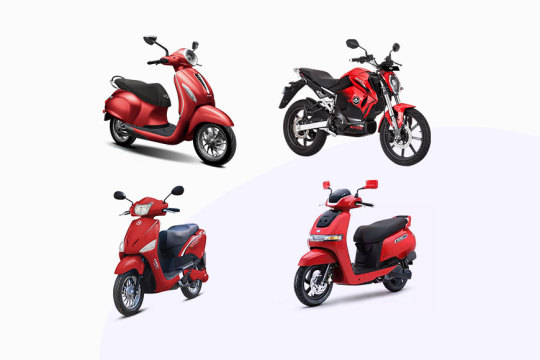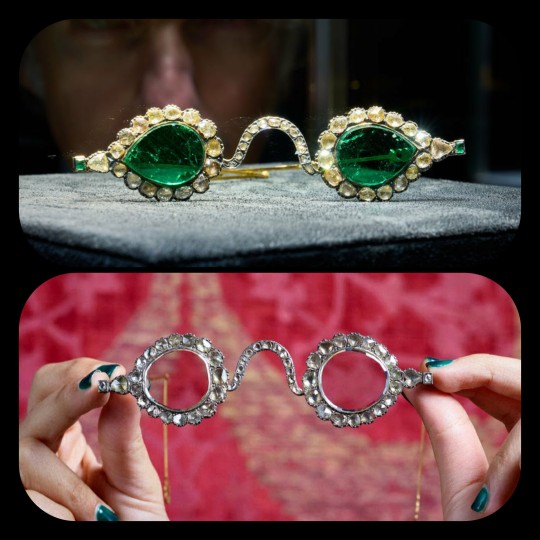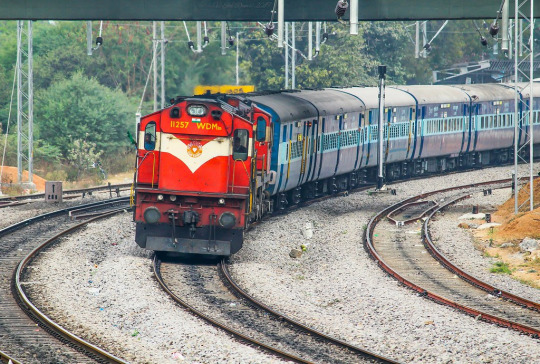#Green Transportation India
Text

E Rickshaw Loader: Affordable and Efficient Solutions
Looking for an eco-friendly and cost-effective transportation solution? The e rickshaw loader is the answer. These versatile vehicles have revolutionized urban logistics with their affordability and efficiency. Understanding the e rickshaw loader price is crucial for businesses and individuals seeking to invest in this sustainable technology.
The e rickshaw loader price varies depending on several factors, including the features and battery capacity. Basic models are more affordable, while premium versions with extended battery life and advanced features might cost more. Despite the initial investment, the low running and maintenance costs make e rickshaw loaders a smart choice.
Additionally, government incentives and subsidies for electric vehicles can significantly reduce the e rickshaw loader price, making them even more accessible. These incentives aim to promote green transportation and reduce urban pollution, aligning with global sustainability goals.
Investing in an e rickshaw loader not only supports environmental conservation but also offers practical benefits like reduced fuel costs and lower maintenance expenses. As cities continue to embrace green technology, the demand for e rickshaw loaders is expected to rise, making now the perfect time to understand and leverage the best e rickshaw loader options.
#E Rickshaw Loader#E Rickshaw Loader Price#E Rickshaw Price in India#Electric Rickshaw Loader#Eco-friendly Transportation India#Affordable E Rickshaw#E Rickshaw Subsidies India#Green Transportation India#Urban Logistics Solutions#Cost-effective E Rickshaw#Low Maintenance E Rickshaw#Electric Vehicle Incentives India#Sustainable Transport India#E Rickshaw Battery Capacity#Urban Pollution Reduction#Electric Cargo Vehicles India#Indian E Rickshaw Market#E Rickshaw Loader Investment#Government Subsidies Electric Vehicles#Green Technology India
2 notes
·
View notes
Text
Zero-Emission Transportation: BEM’s Blueprint for a Cleaner and Greener India

In the journey towards a sustainable future, India faces a challenge: reducing carbon emissions from the growing transportation sector. At the forefront of this green revolution stands Blue Energy Motors (BEM), a company that's not just envisioning a cleaner tomorrow but is actively building it today. As we talk about the world of eco- friendly transportation, let's explore how BEM is reshaping the landscape of India's trucking industry.
Heavy-Duty Trucks and Carbon Emissions
The transportation sector, particularly heavy-duty trucking, is one of the largest contributors to carbon emissions. In India, where logistics and transportation play a key role in economic growth, the environmental impact of diesel-powered trucks cannot be ignored. These vehicles, while essential for the commerce industry, have a big carbon footprint.
LNG: The Game-Changer in Transportation
This is where BEM's innovative green trucking initiative comes into play. By introducing Liquefied Natural Gas (LNG) powered trucks, BEM is offering the best solution for eco-friendly transportation. But what makes LNG trucks different, and why are they considered the best trucks in India for sustainable transportation?
1. Reduced Emissions: LNG trucks have significantly lower carbon dioxide emissions compared to diesel trucks, making them a cleaner alternative.
2. Cost-Effective: Despite being more environmentally friendly, LNG trucks offer competitive operational costs, making them one of the best commercial vehicles in India for businesses.
3. Performance: These trucks deliver power and performance on par with diesel trucks, ensuring that eco-friendliness doesn't come at the cost of efficiency.
4. Quieter Operation: LNG engines run quieter, reducing noise pollution - an often-overlooked part in environmental impact.
Driving the Green Transportation Revolution
As the best truck company in India focused on sustainable solutions, BEM isn't just manufacturing vehicles; it's creating an ecosystem. By integrating next- generation truck technology with LNG fuelling infrastructure, BEM is paving the way for widespread green transportation.
The impact of BEM's initiative extends far beyond reducing the carbon footprint of trucks. By providing the best commercial vehicles in India from an environmental standpoint, BEM is enabling other businesses to decrease their carbon emissions. Companies using BEM's LNG trucks for their supply chain and distribution can significantly lower their overall environmental impact, creating a domino effect across industries.
A Step Towards India's Carbon-Neutral Future
India has set a rein energy goal of achieving carbon neutrality by 2070. While this target might seem achievable years into the future, but the steps we take today will play an important role in our success. LNG trucks play a pivotal role in this journey. This innovative green trucking approach by BEM has led to a reduction of over 5,000 tons of CO2 emissions which is equivalent to planting nearly 2,00,000 trees. By significantly cutting down emissions from the transportation sector, these vehicles offer an immediate and practical solution to combat the pressing environmental challenge.
BEM: Taking Charge for a Cleaner, Greener Planet
Blue Energy Motors is not just a truck manufacturer; it's a leader driving change in India's approach to transportation and environmental responsibility. By providing eco-friendly trucking solutions, BEM empowers businesses to make sustainable choices without compromising on performance.
As we move towards a future where green transportation is not just an option but a necessity, BEM stands at the front taking India's trucking industry into a new era of sustainability.
The road to sustainable transportation is clear, and it's paved with the innovations brought forth by companies like Blue Energy Motors [BEM]. As businesses and consumers alike become more conscious of their carbon footprint, the demand for eco-friendly transportation alternatives will only increase. With its cutting-edge LNG trucks and comprehensive ecosystem approach, BEM is not just meeting this demand – it's driving it forward.
For More:- Zero-Emission Transportation: BEM’s Blueprint for a Cleaner and Greener India.
#best truck in india#green transportation#natural gas vehicles#eco friendly transportation#heavy trucks in india
0 notes
Text
Tata Steel and Welspun Corp Develop Hydrogen Transportation Pipes
First Indian companies to produce ERW pipes for pure hydrogen transport.
Tata Steel and Welspun Corp have successfully manufactured Electric Resistance Welded (ERW) pipes for the transportation of pure hydrogen, marking a significant milestone in India’s green energy sector.
JAMSHEDPUR – Tata Steel and Welspun Corp have become the first Indian companies to manufacture ERW pipelines for the…
#API X65 H grade pipes#बिजनेस#business#ERW pipes#green energy partnership#green hydrogen policy#hydrogen infrastructure#India net-zero 2070#Tata Steel decarbonization#Tata Steel hydrogen pipes#Welspun Corp ESG#Welspun Corp hydrogen transport
0 notes
Text
Automotive and Electric Vehicles future in india?
Image by freepik
The future of the automotive and electric vehicle (EV) sector in India looks promising due to several factors driving growth and transformation:
Government Policies and Incentives: The Indian government has introduced various policies and incentives to promote the adoption of EVs. Schemes like the Faster Adoption and Manufacturing of Hybrid and Electric Vehicles (FAME) aim to…

View On WordPress
#Automotive Innovation#Clean Energy#Electric Cars#Electric Vehicles#EV India#Future of Mobility#Green Transport#India EV Revolution#Smart Mobility#Sustainable Transport
0 notes
Text
Top 5 Electric Bikes in India: Embracing Sustainable and Thrilling Rides

#Electric Bikes India#Eco Friendly Ride#Green Rides#Eco Friendly Transport#Electric Mobility#Sustainable Commute#Clean Energy Bikes#Future Of Transport#Go Electric#Zero Emissions#Electric Revolution#electric vehicles#electric bike#futuristic
0 notes
Text
Revving Up for Growth: Volkswagen Plans Major Expansion into India, Focusing on Electric SUVs!"
Volkswagen plans to revisit its strategy for India amid geopolitical uncertainty in China and sees India as a potential growth market.
German automaker Volkswagen (VW) plans to revisit its strategy for the Indian market amid geopolitical uncertainty in China. VW sees India as a potential growth market and is considering expanding its product range, particularly in the SUV segment. The company…

View On WordPress
#clean energy#Electric Vehicles#ev revolution#EVs#expansion#future of mobility#Green revolution#INDIA#sustainable transport#SUVs#Volkswagen
0 notes
Text
Emerald Spectacles from India, c. 1620-1660 CE: the lenses of these spectacles were cut from a single 300-carat emerald, and it was believed that they possessed mystical properties

These eyeglasses are also known by the name "Astaneh-e ferdaws," meaning "Gate of Paradise," based on the symbolic associations between the color green and the concept of spiritual salvation/Paradise. That symbolism (which is rooted in Islamic tradition) was especially popular in Mughal-era India, where the spectacles were made.

The lenses were crafted from two thin slices of the same emerald. Together, the lenses have a combined weight of about 27 carats, but given the precision, size, and shape of each lens, experts believe that the original emerald likely weighed in excess of 300 carats (more than sixty grams) before it was cleaved down in order to produce the lenses. The emerald was sourced from a mine in Muzo, Colombia, and it was then transported across the Atlantic by Spanish or Portuguese merchants.
Each lens is encircled by a series of rose-cut diamonds, which run along an ornate frame made of gold and silver. The diamond-studded frame was added in the 1890s, when the original prince-nez design was fitted with more modern frames.

The emerald eyeglasses have long been paired with a second set of spectacles, and they were almost certainly commissioned by the same patron. This second pair is known as "Halqeh-e nur," or the "Halo of Light."
The Halo of Light features lenses that were made from slices of diamond. The diamond lenses were cleaved from a single stone, just like the emerald lenses, with the diamond itself being sourced from a mine in Southern India. It's estimated that the original, uncut diamond would have weighed about 200-300 carats, which would make it one of the largest uncut diamonds ever found.

The lenses are so clear and so smoothly cut that it sometimes looks like they're not even there.
Both sets of spectacles date back to the mid-1600s, and it's generally believed that they were commissioned by a Mughal emperor or prince. The identity of that person is still a bit of a mystery, but it has been widely speculated that the patron was Shah Jahan -- the Mughal ruler who famously commissioned the Taj Mahal after the death of his wife, Mumtaz Mahal. Shah Jahan did rule as the Mughal emperor from about 1628 to 1658.
The emerald and diamond lenses may have been chosen for symbolic, sentimental, and/or cultural reasons, or they may have been chosen simply because they're pretty and extravagant; the original meaning and purpose behind the design is still unclear. Experts do believe that the eyeglasses were designed to be worn by someone, though.
At times, it was believed that the spectacles had spiritual properties, like the ability to promote healing, to ward off evil, to impart wisdom, and to bring the wearer closer to enlightenment. Those beliefs are largely based on the spiritual significance that emeralds and diamonds can have within certain Indic and Islamic traditions -- emeralds may be viewed as an emblem of Paradise, salvation, healing, cleansing, and eternal life, while diamonds are similarly associated with enlightenment, wisdom, celestial light, and mysticism.

The Gate of Paradise and the Halo of Light were both kept in the collections of a wealthy Indian family until 1980, when they were sold to private collectors, and they were then put up for auction once again in 2021. They were most recently valued at about $2 million to $3.4 million per pair.
Sources & More Info:
Sotheby's: Mughal Spectacles
Architectural Digest of India: At Sotheby's auction, Mughal-era eyeglasses made of diamond and emerald create a stir
Only Natural Diamonds: Auspicious Sight & the Halqeh-e Nur Spectacles
The Royal Society Publishing: Cleaving the Halqeh-Ye Nur Diamonds
Gemological Institution of America: Two Antique Mughal Spectacles with Gemstone Lenses
Manuscript: From Satan's Crown to the Holy Grail: emeralds in myth, magic, and history
CNN: The $3.5 million Spectacles Said to Ward off Evil
BBC: Rare Mughal Era Spectacles to be Auctioned by Sotheby's
#history#archaeology#artifact#mughal#india#17th century#art#emerald#diamond#glasses#indian lore#islam#religion#mysticism#indian history#anthropology#spirituality#fashion
5K notes
·
View notes
Text
A Friend in Need

Hobart Brown was a stoic man. No, not stoic like Miguel, but it took an awfully huge thing to disrupt his demeanor, to throw him off his uncanny rhythm.
That is what scared Pavitr Prabhakar at this moment, as both of them sat on the floor of his colorful and warm apartment. The lanky man beside him adjusted a tuning peg on his guitar with a shaky hand. Not only that, but the more than normally chaotic colored outline around his figure was brewing like a storm, like a kid’s drawing made with every crayon color. He’d been like this since they came back from Spider HQ.
The pair were sent on a mission not long ago, to take care of yet another anomaly. It couldn’t have gotten better, to be honest. It was an easy catch and transportation of the villain. Heck, Miguel even seemed satisfied with their work. He even gave a smile. But the Spider-Punk’s color remained uneasy, and it didn’t seem to be wearing off with the change of scenery.
Spider-Man India knew better than to ignore his friend’s feelings.
“You doing ok, Hobes?” Pav broke the silence.
The young punk stopped his fiddling, making eye contact for the first time in what felt like forever. He eyed his guitar, and gained control of his once shaky hand. “Ah shit.”
“What’s up, man?”
“No point lyin’ to you,” he sighed, “just got spooked, that’s all.”
Pav nodded, “that’s okay. It happens.”
Hobie scrunched his face up, picking at a sticker on the guitar’s base. “Din’t think the anomaly would be a…”
“…police officer?”
He bit his pierced lip. “Din’t know that. Ya think Miguel would tell me: a Green Goblin cop, that’s who we’re after. Fits the character, greedy bastard out for power,” he chuckled sadly.
“…but goddamn… he looked too much like that bloody bitch that killed my friend.”
Hobie smoothed out the sticker he was picking. It’s like he had more to say, but getting the words out were too hard right now. He took a deep breath, giving his buddy a small smile. “But he’s long gone now. Nothin’ to worry ‘bout.”
“You seem pretty worried,” Pavitr frowned, cocking his head to the side. “You gonna be okay?”
“Pav, my man, I’ll be fine. Ya know what I’m about.” The punk puffed his chest a little, feigning his usual confidence.
That only made his friend giggle lightly. He put a hand on Hobie’s knee. “It’s ok to be shaken up, bro! No shame in it! I’m here!”
Hobie exhaled. Pavitr’s smile was contagious, too contagious. “You’re too fuckin’ softhearted, mate. Love that ‘bout you.” He leaned into his friend’s kind touch, his colored outline flashing to a warm orange. “Thanks.”
“You know I’m not done! Tell me, what can I do to help you?”
Oh, Hobie didn’t think that far yet. He gave a loose shrug. “I ‘unno. Just need to get this pang outta my chest.” He said, holding his hand near his heart. “Ts’like Gwen doin a drum solo.”
Pavitr scooted closer. “Well maybe a hug?”
“Mmmm…maybe somethin’ to take my mind elsewhere,” the punk suggested.
Pavitr leaned on his shoulder now as he thought, letting out a hum. “Hmm… we could always bother Miles!”
“Nahhh he don’t wanna see me like this.”
“Hooooobieeeee,” the shorter man whined, clutching his arm, “you’re making this hard on purpose now!”
The laugh from Hobie confirmed it, a relieving sound to hear. Pavitr punched his arm gently, “ahalright, if you’re not gonna give me an answer, I’ll tickle you to cheer you up!”
“Says the most ticklish goddamn person on earth,” Hobie spat back, not missing a beat.
Pavitr gasped dramatically. Without saying another word, he pretended like he was gonna go, but was yanked back by Hobie’s arm. It almost felt desperate. “Wait I was doggin’ mate! You can tickle me!”
Pav’s eyes practically sparkled. It wasn’t often that Hobie was in the mood for tickles. Usually he was in the mood for tickling… tickling Pav. “Really?”
The nod from his friend immediately made him pump his fists. “Yes!!!”
“‘Ey,” Hobie grabbed the eager hands reaching out towards him, “nothin’ too crazy, ‘Kay? Not lookin’ to pass out.”
“I’d never!” The young man said, watching his friend adjust himself, laying on the floor of the room. “You tell me when you’ve had enough.”
The punk gave a thumbs up. “Got it, mate.”
“Alright,” Pav climbed on his legs, getting comfy. He smiled, watching the outline of Hobie turn pink. “You nervous?”
“Nah.”
“You’re pink thouuughh,” his tone was laced in mischief, placing his hands on Hobie’s stomach, only covered by his thin and messily made spider-suit. He felt him flinch. “You’re always pink when excited!”
“Bruv y-yohou better shut up-!” It was taking everything in his power not to grab Pav’s hands, Pav’s now wiggling hands. Oh god. He was tickling now. Hobie slapped his hands over his mouth. “PFFt-!”
Pav simply chuckled, letting his nimble fingers dance around his tummy. “Aw don’t hide your laugh from me! C’mon, Hobieeeee!” His hands gave his sides a quick squeeze as encouragement.
“ACK-!” Hobie’s hands grabbed Pav’s out of instinct, “ohMYGAWd!!”
Like it was nothing, the strong arms of Pavitr pushed Hobie’s arms up and away. “Nuh uh uh! You keep those up there! You better not punch me!”
“Ihihihi might!”
“Then I’ll just web your arms down!”
Hobie narrowed his eyes threateningly. “Don’t.”
Pav wasn’t one to wear a shit-eating grin, but this was an exception. “Then keep your arms uuuuuuup!”
He heard his friend do something he rarely did: groan in annoyance. Of course that groan was replaced with a hearty chuckle once Pav wiggled his fingers at him.“There’s that smile I love!”
Hobie already felt like spontaneously combusting. It was something about Pavitr and his stupidly silly way of tickling that made him break into a goofy grin, and also the fact he was the one receiving. This wasn’t a usual spot for him to be in. Was it unnerving? Yes, but the pangs in his chest were barely felt over the fluttery butterflies in his stomach.
And then Pav was back to the side squeezes.
“BRuhuhuhuvvv!” He snorted, his boots hitting against the floor. Hobie was trying to focus on kicking his legs so he wouldn’t give his friend a bloody nose. Pav didn’t make this easy at all. He felt fingers slip into his vest, then dig into his rib cage. “AH SHIHIHIT!” Hobie blurted, twisting from one side to the other. The crop top he had on was doing nothing to protect him.
“I gotcha good!” Pav teased, leaning closer. Now he was gonna start being mean. Wait, he wasn’t mean before? No, my dear reader, he wasn’t. “Awwww Hobieeee look at youuuuu!”
“SH-Shuhuhut the f-!” Hobie stopped himself, snorting again.
“Ohhhh? What was that? Hobie, you can’t swear at meeee! You know what’ll happen.”
Yeah, Hobie knew. A panicked grin spread across his face, avoiding eye contact with his shorter friend. “I-IHihihi d-din’t say nothin!”
“You sure?” Pavitr scritched into the punk’s lower ribs. He got the reaction he was searching for.
“FuHUCK!”
“Yeah, that’s what I thought,” his goofy tone slipped into a more sly one. Hobie felt Pavitr adjusting himself around. “Nohoho c’mon mate y-yaha don’t gotta!”
Pav paused. “Is this a ‘stop?’” The mischief was absent in his voice.
Hobie finally looked at his friend, his face heating up. “I-I mean…”
“We can stop if this is too much. I’m only trying to cheer you up.” Spider-Man India had removed his hands, holding them up to gesture his compliance.
The outline around the punk stirred pink. Hobie wasn’t one for admitting things, even to someone like Pav. “I-I…” he clamped his mouth shut.
“It’s ok if you want more tickles!”
Oh come on Pav! It was hard enough to even ask for it.
That’s why Hobie was gonna do it his own way, a way his friend would get the signal. He took his hand off his mouth, showing a smirk. Slowly but surely, he lifted a middle finger at Pavitr. “Fuck off.”
Spider-Man India’s eyes went wide, not only wide but bright. “Hobart Brown!!” He gasped, feigning offense. “Okay, you asked for this.”
Even if it didn’t do much, Pav lifted Hobie’s crop top upward to expose his suit covered stomach more. He only did it to make the Spider-Punk anxious. Clearly it worked. The man was giggling. Yes, I said giggling.
“So…Hobart…what is a tickle monster’s favorite fruit?” Pavitr asked, cracking his knuckles.
“Aahaw shit yohohou’re bein’ a dick, now…”
“Answer the questiiionnnnn!” His fingers fluttered teasingly, making Hobie flinch. “Ah! Noho come on I’m naht answering!!”
“Ten…” he counted, “nine…eight…seven…”
Hobie scoffed, balling his hands into fists. “Imma kill you after this, I swear to non-existent deity.”
“Six…” Pav lowered his head a few inches, causing the stomach below him to quiver from chuckles. “Five…”
“Pav!”
“Four-“
“KAY FINE! It’s rahahaspberries! Raspberries, you fuckin tw-AHT!” Hobie almost bonked Pavitr on the head when he saw the guy dive face first into his stomach. He dissolved upon impact, wheezing. “YOHOHOU BASTARD!”
Pavitr raised his head, “what was that?”
“YOu-yohohou’re a basT-“
“PRRBBTTTT!!” Pav planted another raspberry mid-sentence, relishing in his friend’s free flying cackles. He felt his friend grab his head, digging his nails into his hair. He was definitely holding back from his instincts, which Pav appreciated from a self-preserving point, but also from a “my friend really wants to laugh” point.
The punk threw his head back, snorting. “Yohohou-y-yohohou’re killin’ meeEEHEHE!!” His suit wasn’t protecting him at all from the raspberry onslaught. “SHIHIT!”
“You hangin’ in there?” Pav looked up. Hobie panted coming back to reality for a sec. He loosened his grip on his friend’s head. “S-Sorry ‘bout that, mate. D-Dohon’t…don’t wanna rip your perfect h-hahahair out.” He took a bigger breath, “m’good…m-maybe a minute more and we stop.”
“Can do!” Pavitr smiled… then immediately went back to another tummy raspberry. Hobie almost folded in on himself, wheezes escaping his lips. “NAHA FUCK!”
It was by the third round of raspberries when Hobie tapped out, laughter getting a little too frantic. “OKAHAY! OKAYIMDONE!”
Like a switch turned off, Spider-Man India let up. He swished his hair out of his face and fixed it, smiling at the big ol’ grin across Hobie’s face. “Did I kill ya?”
His chest heaved with each pant, shaking his head at the question and pushing out his residual giggles. He peered at his stomach. “C-Close tho…” he mumbled, watching his friend roll off him and sit beside. “Y-You’re a menace.”
Pavitr grabbed Hobie’s now outstretched hand, pulling him up to sit. “But lookit that smile you got!”
His hand rubbed his face, sort of sore from smiling so much. “Yeaaaaahh shuddup.” He punched his arm playfully.
“How are you feeling?” Pavitr placed a hand on his shoulder, rubbing it. “Need water?”
“Please. Thanks.” Hobie coughed, remaining where he was as Spider-Man India reached for a bottle on his nightstand. He handed it to him. “…feel tired…but good. Dopamine’s some good stuff.” He twisted the cap off and downed it.
“That’s what I’m saying! It’s a nice feeling, right?”
Hobie shrugged as he drank. He took a breath, “yeaaaaah maybe you’re right.”
“Maybe?”
The punk squinted at him, then rolled his eyes. “You are.”
Pavitr grinned. This was a better sight to see. “It’s nice to see that smile again.”
For a split second Hobie’s outline went pink, then reverted to its neutral gray. “Thanks. You helped it, mate.”
“You hungry?”
“Starvin’.”
“I know a great place, c’mon!” Pavitr stood up, stretching. He grabbed his mask on his bed.
“You paying?”
“Aw, come on, Hobes!”
“You owe me after that.”
“Okay fiiiiine, I’ll pay… even though you liked tickle time.”
Hobie sighed, “you aren’t gonna shuddup, are you?”
Pavitr simply grinned, opening his window. “Nope!” He hopped through it, already swinging away.
It took longer for Hobie to get up. He felt the blood rush to his head when he stood up too fast, “shit.” It stabled after a few seconds. He grabbed his guitar, putting the strap over him. He made his way to the window, smirking when Pav kept beckoning him atop another building.
He’d catch up, don’t worry. The punk just needed to take a second and appreciate his friend.
#across the spiderverse tickle#across the spiderverse#spiderverse tickle#tickle fic#tickle fanfic#sfw tickle community#lee!hobie#Ler!pavitr#minors dni#atsv tickle#ticklish!spiderman#hobie brown#pavitr prabhakar#sfw tickle fic
40 notes
·
View notes
Text
This article isn't solely about the environment, but some of the things there are, so I'll summarize them for you :)
Bhutan and India boosted tiger numbers
According to Bhutan's latest tiger census, tigers have increased their population from 103 to 131 since 2015 - which is a rise of 27 per-cent.
This follows the country's major interventions to help the wild tiger population, including community based tiger conservation programmes, habitat improvement and human-wildlife conflict management projects.
Tigers are, of course, still at risk, but Bhutan's dedication to help and preserve their population is inspiring.
India has also reported a six pre-cent rise in their wild tiger population since last year. The country is believed to be populated by 3,682 tigers now.
Germany’s €49 travel pass
A part of a green new policy in Germany, a €49 (£42)-a-month pass allowing unlimited travel on buses and trains in Germany.
This will result in about 25 per-cent rise (per year) in the numbers of people choosing public transport instead of cars - a low carbon way of transport (according to the national rail operator Deutsche Bahn (DB)).
The Deutschlandticket launched on 1 May as a plan to lower the cost of living and encourage people to take the train instead of driving.
It seems to already have some great results: The Association of German Transport Companies says that almost 10 million people had used the pass by the end of June. DB has also said that trains to holiday destinations were busier this summer.
UK crop yields rose despite a fall in fertiliser use
New data from the UK’s Department for Environment, Food and Rural Affairs (Defra) revealed that UK crop yields rose last year, despite a sharp decline in fossil fuel fertiliser use. Many believed that these fertilisers were necessary, but this data proves that belief wrong.
According to Defra, wheat, barley, oilseed rape and sugar beet yields rose by 2.4 per cent in 2022, while fertiliser use fell by a reported 27 per cent.
These artificial fertilisers are made using natural gas, and because the prices soared in 2022, following Russia's invasion of Ukraine, farmers had to either use much less of them, or embrace more natural alternatives.
England’s plastic bag charge was hailed a success
Since the government in England forced supermarkets to charge 5p a plastic bag, there's been a 98 per-cent reduction of single use plastic bags.
That’s according to figures from the Department for Environment, Food and Rural Affairs, which introduced the charge in 2015, then increased it to 10p in 2021.
Environmental campaigners welcomed the figures, but urged the UK government not to row back on other green policies, including a deposit return scheme for plastic bottles and rules to make plastic producers contribute to clean-up costs. Both policies have been delayed until 2025.
Have a good weekend everyone!
Let me know, what good news have yo read or heard about lately?
#climate change#climate#hope#good news#more to come#climate emergency#news#climate justice#hopeful#positive news
203 notes
·
View notes
Text
Most books on the Bengal delta begin by describing it as “riverine,” [...] the land is the product of fluvial action [...]. [I]n thinking about Bengal, one tends to imagine the ricepaddy fields [...]. It was not so all the time; Bengal was never really a land of farming [...]. Traveling through Bengal in the eighteenth century, the French traveler Orme saw a highly sophisticated water-based economy - the blessing of rivers - irrigated [...] by the monsoon rains and annual flooding. [...] The rivers were not just channels of water; they carried a thriving trade, transporting people and goods from one part of the delta to another. Today, Bengal is generally seen as comprising lush green rice paddies [...]. Rivers are often presented as causing immense grief [through seasonal flooding] [...]. Clearly, there is a mismatch here. [...] How (and when) did Bengal’s social milieu transform from water-based to land-based? [...] Bengal’s essential character as a fluid landscape was changed during the colonial times through legal interventions that were aimed at stabilizing lands and waters, at creating permanent boundaries between them, and at privileging land over water, in a land of shifting river courses, inundated irrigation, and river-based life.
Such a separation of land and water was made possible not just by physical constructions but first and foremost by engineering a legal framework that gradually entered the popular vocabulary. [...] BADA, which stands for the Bengal Alluvion and Diluvion Act, [was] a law passed by the colonial British rulers in 1825, following the Permanent Settlement of 1793. [...] The environment of Bengal can be described as hybrid, where the demarcation between land and water is neither well-defined nor permanent. Nature here represents a borderless world, or at best one in which borders are not fixed lines on the ground demarcating a territory, but are negotiated spaces or zones. Such “[...] spaces” comprise “not [only] lines of separation but zones of interaction…transformation, transgression, and possibility” (Howitt 2001, 240).
---
Current boundaries of land and water are as much products of history as nature and the colonial rule of Bengal played a key role in changing the ideas and valuations of both. [...] The debate on what constituted productive and unproductive uses of land preceded the application of English property law not only to establish permanent zamindari (a common term for the system of landlordism) settlement of land tenure in India, but also to valorize land in what had essentially been a land-water hybrid environment. The colonial land revenue system, by seeing land as more productive (being able to yield revenue) and useful, began the long historical process of branding the rivers of Bengal as uncivil and in need of control. [...] The problem with deltaic land is its non-permanent nature, as silt is stored by rivers: rivers do not always flow along a certain route [...] The laws that the colonial British brought to Bengal, however, were founded upon the thinking of land as being fixed in place. [...]
---
Experiments to fine-tune the land-based economy began in 1760 when Bengal, and its ceded territories, came under the East India Company rule. [...] To entrench the system, the Permanent Settlement of 1793 created zamindars (or landlords) “in perpetuity” - meaning for good. The system was aimed at reducing the complexities of revenue collection due to erratically shifting lands and unpredictable harvests in a monsoon-dependent area [...]. Alarmed at the possibility of dismemberment of their estates, the zamindars decided to bind tenants to the same conditions to which they themselves were bound by the colonial government, and one of their actions was to create patni tenures or perpetual leases. [...]
It also meant that the right to collect rent from the tenants, often through the use of force, devolved to the lower layers, making the upper-layer zamindars more of a juridical rather than a real social entity in the eyes of the peasants. The patnidars, finding how much trouble this arrangement took off their own back, created dar-patnis or patnis of the second degree [...]. The dar-patnis created se-patnis or patnis of the third degree. The East India Company, therefore, had to legalize, through Regulation VIII of 1819, the creation of such formations, thus giving a de jure recognition post facto [...].
The regulation, although innocuous and simple, was of great historical potency: it became the key that unlocked the door to environmental and socio-economic changes of unparalleled magnitude. From a riverine community, within a hundred years, Bengal was transformed into a land-based community. [...]
---
The meaning of property also changed as a result of this law: the cultivators began to lose the right to occupy the land that they had enjoyed since ancient times because the colonial British had enumerated the characteristics of the zamindari property as an absolute right of proprietorship in the soil [...].
[T]he Company then began to contemplate the problematic issue of legalizing the fictional entities of chars [...]. The law that was created for this purpose -- and still rules the rights of ownership of charlands -- is the Bengal Alluvion and Diluvion Regulation Act (BADA) of 1825. [...] BADA was meant to establish a set of rules to guide the courts to determine the claims to land “gained by alluvion” or accretion, and the resurfaced land previously lost by diluvion or erosion. Even if one takes it for granted that chars are technically non-land in the sense that they exist within river banks, the difficulty remains that when a piece of land is lost to bank erosion, it may not arise in exactly the same location or arise at all within the foreseeable future. This means the owner has no certainty that they will get it back when it resurfaces or when another char rises nearby. [...] Thus, the key to establishing land rights in the court of law remained the payment of rent, even on diluviated land. [...] Such a rule will, however, not be applicable if a river suddenly changes its course and separates a considerable piece of land from one to join it with another farm, but without destroying the identity of the land so removed -- thus preventing legal recognition. New accretions in large navigable rivers would be the property of the state [...].
---
All text above by: Kuntala Lahiri-Dutt. “Commodified Land, Dangerous Water: Colonial Perceptions of Riverine Bengal.” In: “Asian Environments: Connections across Borders, Landscapes, and Times.” Edited by Ursula Munster, Shiho Satsuka, and Gunnel Cederlof. RCC Perspectives, no. 3, 17-22. 2014. [Bold emphasis and some paragraph breaks/contractions added by me.]
#summary of how britain took over bengal#calcutta#sundarbans#abolition#ecology#imperial#colonial#mangroves#tidalectics#archipelagic thinking#wetlands#ecologies#carceral geography#debt and debt colonies#caribbean#indigenous
256 notes
·
View notes
Text
Train fact: NAMED TRAINS!
So you've probably heard of the Flying Scotsman. Big green thing, turned 100 this year, probably the most famous locomotive in the UK, if not the world. Adapted into Thomas the Tank Engine with a whole lot of charisma and eyebrows. But did you know that name wasn't hers originally?
'The Flying Scotsman' is actually the name (formerly a nickname) of the train. The locomotive is Flying Scotsman's monster named for it. She was given the name in 1924, to help promote said service at the British Empire exhibition. Any engine, with any rack of coaches, or any train set, can be the Flying Scotsman.
Right now, it's run by LNER's new Azumas, which get a special little outfit about it:


Most of the named trains in the UK were phased out with steam (although you can still catch the Sheffield continental from Sheffield to St. Pancras, or the Northern Lights from King's Cross to Aberdeen, among a handfull of others) but they live on elsewhere.
Some are luxury touring trains, like Japan's Seven Stars in Kyushu (left) or South Africa's Blue Train (right).


Transport isn't really the goal here. They sell out months in advance and cost anywhere from hundreds to thousands of dollars, depending on the class of ticket you get. They're an Experience, and a very cushy experience at that. Just look at their interiors!


(yes, that's a piano)
But the vast majority of named trains in operation (as far as I can tell) are regularly-running exepress services across Asia.
Japan names their Shinkanens, India, Pakistan, Bengladesh & Sri Lanka often name their intercity expresses. These are practical, long-distance services, often named for monuments, like India's Ajanta Express, named for the Ajanta caves:


Or their operating regions, like Sri Lanka's උත්තර දේවී | Princess/Queen of the North:

Some North American countries also kept historic named routes, like Amtrak's Sunset Limited, or Canada's Ocean, which has operated continuously since 1904:

but my personal favorite named services are Australia's historically-nicknamed "The Fish", named after one of its drivers:

and the numerous trains that have been companion-nicknamed "The Chips" to match.
#Train facts!#ids in alt text#Sri Lanka Railways#LNER#modern LNER! Modern LNER! I know!#South Central Railway#Indian railways#NSW Train Link#via rail canada#the blue train#seven stars in kyushu#LNER Azuma
169 notes
·
View notes
Text
Blue Energy Motors: Revolutionizing India's LNG Vehicle Market

Discover how Blue Energy Motors is transforming India's transportation industry with cutting-edge LNG (Liquefied Natural Gas) vehicles. By offering sustainable and cost-effective alternatives, they are driving the future of eco-friendly logistics and reducing carbon footprints across the nation.
#best truck in india#green transportation#truck manufacturers#truck company in india#natural gas vehicles#eco friendly transportation
0 notes
Text
Meet the 2024 Goldman Environmental Prize Winners

Alok Shukla from India, Andrea Vidaurre from the U.S., Marcel Gomes from Brazil, Murrawah Maroochy Johnson from Australia, Teresa Vicente from Spain, and Nonhle Mbuthuma and Sinegugu Zukulu from South Africa.
This year’s winners include two Indigenous activists who stopped destructive seismic testing for oil and gas off the Eastern Cape in Africa, an activist who protected a forest in India from coal mining, an organizer who changed California’s transportation regulations, a journalist who exposed links between beef and deforestation in Brazil, an activist who blocked development of a coal mine in Australia, a professor of philosophy of law who led a campaign that resulted in legal rights to an ecosystem in Spain.
“There is no shortage of those who are doing the hard work, selflessly. These seven leaders refused to be complacent amidst adversity, or to be cowed by powerful corporations and governments,” John Goldman, president of the Goldman Environmental Foundation, said in a statement. “Alone, their achievements across the world are impressive. Together, they are a collective force—and a growing global movement—that is breathtaking and full of hope.
12 notes
·
View notes
Text


Exquisite esquites
By Mia Leimkuhler
If I were mayor of Picnictown, every picnic would have the following: a blanket, a 1:1 dog-to-human ratio and esquites. The blanket’s there because grass is itchy no matter what the most outdoorsy person in the group says; the dogs because dogs are great. The esquites are essential because my favorite outdoor corn is elotes, but they don’t travel nearly as well as esquites. (The laws of Picnictown consider how easy it is to carry your picnic things on public transportation.)
This is barely a compromise, though, because Kay Chun’s esquites capture all the beloved and balanced elements of elotes: sweet summer corn, tangy lime, creamy cotija (and crema), spicy ancho chile. The smoky flavor you get from grilled corn is here, too, as the kernels are charred in a hot skillet until browned and caramelized. Perhaps the most enticing part of the recipe is this note from Kay: “Leftovers transform quickly into a great pasta salad the next day; simply toss with cooked pasta and olive oil.” Picnictown loves a resourceful pasta salad.
More picnic decrees, because it’s the first day of summer! Make Zainab Shah’s sheet-pan chicken tikka thighs ahead of time, and then toss some roti or naan in your tote bag for effortless but extremely delicious sandwiches. Ali Slagle’s green bean salad with dill pickles and feta is perfect all by itself, but if someone else wanted to bring a container of cooked barley or farro, that would be a really nice collaborative grain bowl picnic moment. (For even more lovely, easy picnic ideas that travel well, check out this recipe collection.)
Every June, the summer produce flows into and overwhelms my corner grocery store, and every June I am positively giddy about it. Right now the shelves are buckling from so many cherry tomatoes, and I’m doing my part with salad e-shirazi, basil and tomato fried rice and salmon and tomatoes in foil, a five-star, five-ingredient dinner from Mark Bittman.
I am trying to be more adventurous with my vegetables, branching out and bringing home goodies I don’t usually cook. I’ve never really loved bitter melon (I’m not alone), but I do like bitter things — extra dark chocolate, dandelion greens, Campari. So I’m going to try this stir-fried bitter melon with eggs, a recipe from Chutatip Suntaranon (known as Nok) adapted by Cathy Erway.
The creamy scrambled eggs, salty soy sauce and molasses-y brown sugar will mellow out the harshest edges of the bitter melon. And I trust Nok — I’ve had the pleasure of dining at Kalaya, Nok’s restaurant in Philadelphia, and Nok never misses.
Lastly: It’s hot out there, and I’d like to give you an excuse to stand in front of the open refrigerator after a long afternoon in Picnictown. Here’s Lisa Donovan’s new recipe for buttermilk tres leches cake, which is best served extremely chilled, straight from the pan. I interpret this as spooning giant mouthfuls of cold, creamy cake into my mouth while bending into the fridge, but if you’d like to use plates and forks and a table, by all means.
IN THIS NEWSLETTER







Sign up for The Veggie newsletter
Tanya Sichynsky shares the most delicious vegetarian recipes for weeknight cooking, packed lunches and dinner parties.

#the new york times #cooking
#mia leimkuhler #picnic #kay chun
#make zainab #matk bityman
#cathy erway #nok #lisa donovan
#sheer-pan chicken tikka thinghs
#basil and tomato fried rice
#salmon and tomatoes on foil
#butyermilk tres leches cake
#recipe’s #the veggie newsletter
#tania shichynsky #dinner parties
#packed lunches #food
#original food #xpuigc #pucex
#olaf peterson #de tot
#the new york times#cooking#mia leimkuhler#picnic#kay chun#make zainab#matk bittman#cathy erway#nok#lisa donovan#sheet-pan chicken tikka thinghs#basil and tomato fried rice#salmon and tomatoes on foil#butyermilk tres leches cake#recipe’s#the veggie newsletter#tanya shichynsky#dinner parties#packed lunches#food#original food#xpuigc#pucex#olaf peterson#de tot
10 notes
·
View notes
Text
From wildfires in Canada to flooding in India, people across the world are dealing with the realities of climate change. The world recorded its highest temperatures ever this summer and the climate models for 2100 make sobering reading.
To tackle climate change we need a data-driven approach, using technology to help decarbonize the sectors that contribute to it. The transportation sector is the largest contributor to climate change in the US and Europe. Simply put, travel is in need of a long-overdue update. The good news is that, in 2024, we will kickstart that much needed moment for green mobility.
The International Energy Agency estimates 55 percent of the reductions needed to cut all greenhouse gas emissions by 2050 are linked to everyday consumer choices, particularly driving.
Over two-thirds of consumers cite the lack of electric charging stations as the biggest barrier to buying electric vehicles (EVs). However, new legislation, such as the European Green Deal and universal EV charging standards in the US, will help to put new chargers on the road.
The infrastructure is growing, but the information is still catching up. That’s why, to empower drivers with the information they need, Google has updated its Search experience to make it easier to research the costs and incentives associated with EVs. Google Maps also shows nearby EV chargers and offers eco-friendly routing—providing directions optimized for fuel or battery efficiency. In 2024, drivers will not only be able to more easily purchase an electric vehicle, they will be able to more easily charge them. The theory is simple: When billions of people have the tools to make more informed decisions, meaningful change is possible.
The impact of individuals grows exponentially when coupled with systemic investments by government officials and business leaders. We all know the feeling of impatience when waiting for the light to turn green. It’s not just an inconvenience, it’s bad for the environment—US Department of Energy data suggests that eliminating idling vehicles is equivalent to taking 5 million cars off American roads. In partnership with local governments, Google (where I am the chief sustainability officer) recently expanded Project Green Light—which leverages AI to improve traffic light efficiency—to 12 cities around the world. Early results show there’s potential to reduce the number of vehicle stops by up to 30 percent, lowering emissions for up to 30 million car trips monthly.
Yet, we cannot focus exclusively on cars—providing sustainable public transport is also vital. Nowhere is the value clearer than in Japan, a leader in high-speed rail. One passenger traveling between Tokyo and Osaka emits 4.2 kilograms of carbon dioxide—one-twelfth the emissions of a passenger on a Tokyo-Osaka flight. That's why it's so important for people to have information on alternative, climate-friendly modes of transport at their fingertips—including comparable train routes, biking, and walking suggestions. This also illustrates the potential impact of projects like the Brightline train, designed to connect Los Angeles and Las Vegas by electric, high-speed rail.
Along with opportunities on roads and rails, in 2024 we will make progress on our skies. Aviation is responsible for 3.5 percent of global warming—35 percent of which is non-emissions related. The culprit? Contrails—the feathery white trails created by airplanes. They may look harmless, but they trap heat inside the Earth’s atmosphere. Using AI-based technology, Google partnered with American Airlines and Breakthrough Energy to reduce contrails by 54 percent—achieving the first proof point of verifiable and cost-effective contrail avoidance. Delta Airlines, Massachusetts Institute of Technology, and others are also working to tackle the issue. In 2024, clean mobility will move closer to the norm across transportation, not the exception.
6 notes
·
View notes
Text
good god girl, maybe some of us are not vegan because we eat chicken like once in three months?? Would reduction not be a more productive goal of vegan activism than outright banning? Like if your arguments are that animals are being eaten, then you’re being unrealistic about the entire actual concept of the food chain. Humans are omnivores, you do not need to change that to achieve your goals.
A vegan lifestyle is also entirely the product of your geographical location. If you live somewhere that shit does not grow, what are you going to do?? I just think about the difference between food options in India and Canada, for example. India: between the tropics (tropics and equator even, in fact). All-year-round sun, there’s pretty much always stuff growing. Different kinds of land will mean you can grow everything from staples like rice and wheat to vegetables, fruits and plantation crops. It’s reflected in the cuisines: Indian food has a much, much wider offering of vegetarian food, and many more Indians have restricted diets that more or less overlap with vegetarianism. Because crops grows. Locally.
Canada. Harvest in the fall, from November to March, your fields are practically unusable. Compare the prices of fresh produce in (and now I’m being generous to give you a highly populated, non-remote province here for an example) Ontario. Ontario has farms where in the fall you get fresh autumn vegetables and fruits. You’ll also get them in larger quantities. It is way cheaper, fresher and also uses less energy and fuel to transport the vegetables like 50 km from farm to market.
Come the winter and nothing grows. If you look at most vegetables you’ll find on store shelves in December or February, and most of it is either imported from warmer regions of the US (often the case for chains that are in both countries) or from South American countries (sometimes SA -> USA -> Canada). The importing has to go through cross-country customs, had to be driven for days, is less fresh or rich in nutrients by the time you get it, and is more expensive. Of course. And we all come out of it poorer. Is it any wonder why people will eat meat? We’re even talking here about a place like Ontario, very well connected on North American trade routes. Can you justify someone in Yukon deciding to eat meat over a $17/lb. green veg? Be for fucking real…
There simply cannot be a blanket-global solution to animal products. You’ve got to work with what your geography has to offer. It’s the same thing we say when we say that avocados have an environmental cost when you expect them to be available year-round in places they don’t grow. We encourage people to go for more local produce there, and I think the same should go for all parts of your diet too. If your animals are local, then their footprint is lower than importing kiwis from New Zealand to the US. I don’t see how that’s hard to understand.
#veganism#the first para is a rant bc someone was being an idiot but I mean the rest of it most sincerely:#YOU HAVE TO WORK WITH YOUR GEOGRAPHY#capitalism has you thinking the whole world Is this flat homogenous thing#and all things can be solved by ‘buying (new solution)!’ *Buy!* our new Vegan Leather and feel good about yourself!#(<- plastic that will end up in a dump as Indonesia’s problem; not the pontificating American vegan’s)#*~Buy!!~* our new honey substitute! 100% cruelty free by avoiding the bees; even as the bees literally continue to make honey anyway#(<- monocrop agave fields in Mexico can deal with your misplaced guilt for you 🥰💕)#Like. At least have the courage of your convictions and quit sweetener entirely if you’re#concerned about both cruelty (which honey harvesting is not but okay) and sustainability. Or switch back to sugarcane.#Unless of course sustainability is simply someone else’s problem 😊 (hi third world!!)#My problems with veganism the movement are also my problems with the west; you all are really fucking hypocrites.#We have to go cleaning up after you guys all the time. You HAVE to work WITH your geography; not against it#Plants are not some miraculous catch-all solution. And mate; you’ve got to kill a plant to eat it too#Plants are alive; trust me. If you don’t eat anything for fear of killing it you’ll either be living on roadkill and infect and die#or you’ll end up killing yourself out of not! eating!#; you can’t eat rocks. All food was once alive.
6 notes
·
View notes